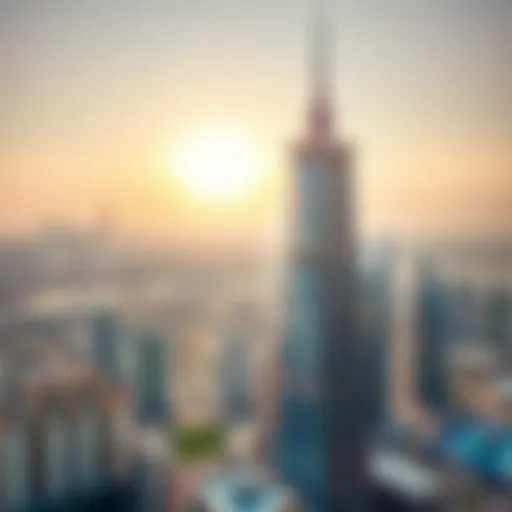Exploring the Impact of Single Business Towers in Dubai


Intro
The skyline of Dubai is a marvel to behold, adorned with towering structures that reflect both innovation and aspiration. Among these, single business tower offices have carved a unique niche, offering a blend of functionality and modern design. The rise of these towers is not merely a byproduct of architectural ambition; they symbolize the shifting dynamics of business operations and the evolving expectations of professionals in a rapidly changing economic landscape.
In recent years, there has been a palpable surge in interest towards single business tower offices. These buildings serve as microcosms of modern industry—with their cutting-edge amenities, sustainable practices, and strategic locations, they hold significant appeal for a diverse range of businesses. The ongoing developments are shaping not just the physical landscape of Dubai, but also the socio-economic interactions that unfold within these spaces. This article navigates through the pivotal factors propelling the emergence of single business tower offices, their implications for various stakeholders, and how they are intricately woven into the fabric of Dubai's real estate market.
Understanding these trends is essential for homebuyers, investors, agents, analysts, and expats alike. As we delve deeper into this topic, we will explore market trends, investment strategies, and the potential future of these pivotal office spaces.
Prolusion to Single Business Tower Offices
Single business tower offices represent a notable evolution in Dubai's real estate market, reflecting broader trends in architecture, business practices, and urban living. These towering structures not only signify the aspirations of a modern metropolis but also cater to the needs of contemporary enterprises seeking efficient, central, and flexible office spaces. As Dubai continues to establish itself as a global hub for trade, tourism, and finance, understanding the dynamics of these office towers is essential for stakeholders involved in both investment and usage.
The relevance of single business towers lies in their role as multifunctional spaces that enhance connectivity and provide a platform for innovation. From startups occupying shared spaces to established firms seeking a prestigious address, the variety of occupants illustrates the broad appeal of single business tower offices. Furthermore, their strategic locations often in the heart of the city facilitate access to resources, both human and infrastructural, making these towers attractive in an increasingly competitive market.
Beyond their architectural grandeur, one cannot overlook the financial implications surrounding single business towers. The increasing demand for prime office locations puts pressure on supply, driving prices upward. This situation opens doors for investment opportunities but also presents challenges related to occupancy and maintenance costs. Stakeholders need to remain well-informed about market trends to leverage possible advantages and mitigate risks associated with fluctuating demand.
Through this article, we delve into the core aspects of single business tower offices, unpacking their definitions, historical emergence, architectural significance, economic implications, and social-cultural impact. With this comprehensive overview, readers will gain insight into how these towers are not just physical structures but pivotal elements reshaping the workspace landscape in Dubai.
Defining Single Business Tower Offices
Single business tower offices can be described as high-rise buildings designed specifically to house business activities and facilitate corporate operations. These structures often house multiple tenants within a single tower, promoting a vertical community among various companies. The architectural designs emphasize function without sacrificing aesthetics, often featuring large floor plates, ample natural light, and tech-forward infrastructure.
Usually situated in prime locations, single business towers portray a city’s pulse—drawing in professionals and encouraging networking within their walls. In sum, they embody the contemporary workspace valorizing adaptability and connectivity.
Historical Context of Office Spaces in Dubai
The landscape of Dubai's office spaces wasn't always dominated by towering skyscrapers. Historically, the office environment evolved from modest spaces in low-rise buildings to the iconic business towers we see today. During the late 20th century, Dubai’s economic surge fueled a demand for more professional environments. Factors like foreign investments, tourism, and the rise of local businesses necessitated modern office solutions that could accommodate growing corporate demands.
The first notable high-rise offices began emerging in the 1980s, reflecting the emirate’s commitment to positioning itself on the world map. Real estate developments escalated in the 1990s and early 2000s, coinciding with the strategic planning of free zones which invited international businesses. Fast forward to today, and single business towers have transformed office dynamics, representing a blend of luxury and functionality in the heart of Dubai’s business district.
With influences from global architectural trends and the area's unique cultural context, these offices have not only marked a phase of economic prosperity but have also become symbols of an ever-evolving urban identity.
"Dubai’s skyline is not just a visual delight but a testament to its continuous evolution in economic and social realms."
Real estate investors, firms, and expats should pay close attention to how these towers will shape future office demand and the way businesses operate within this vibrant city.
Architectural Significance
Architectural significance is not merely a stylistic choice; it's a cornerstone in understanding the role single business tower offices play in Dubai's real estate market. These towers are not just structures; they symbolize the city's aspirations, integrating modernity, functionality, and sustainability. The ways in which these buildings are designed can significantly influence not just the businesses operating within them, but also the surrounding urban landscape.
Design Innovations in Tower Offices
The design of business towers in Dubai has witnessed remarkable innovations over the years. Architects are increasingly willing to push the envelope, creating unique silhouettes that distinguish one tower from another. For instance, consider the Dubai Marina area, where the twisting shapes of some buildings defy gravity and conventional design.
Innovative use of materials, such as glass and steel, allows for increased natural light and energy efficiency, appealing to modern businesses seeking a workspace that is both inviting and productive. Moreover, advancements in technology have led to the integration of smart building systems, enhancing comfort and security. These systems can automatically adjust lighting and temperature based on the occupancy and time of day, resulting in not just improved energy efficiencies but also productivity gains for businesses operating within.
The innovations are not limited to aesthetics. With 3D printing and modular construction, companies can now craft custom designs tailored to specific needs at a pace that was unimaginable a few decades ago, further enhancing the marketability of these business towers.
Aesthetic vs. Functional Elements
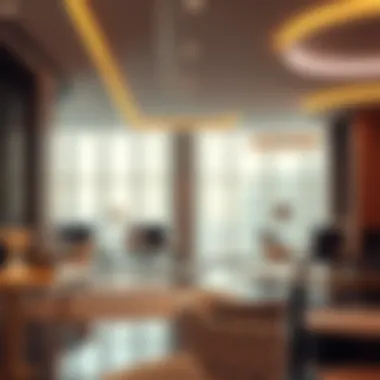
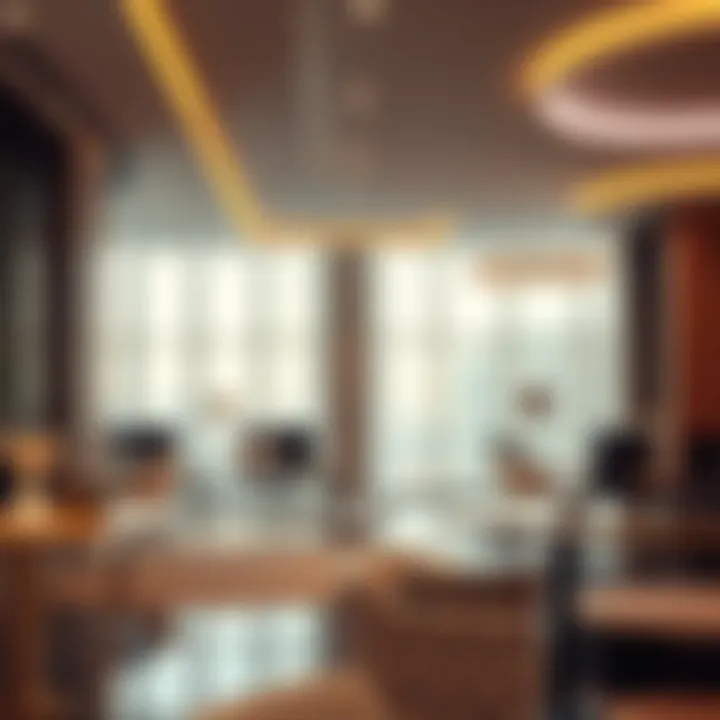
Balancing the aesthetic appeal with functional requirements is crucial when creating single business tower offices. On one hand, the elegant facades and striking designs attract tenants and visitors alike. On the other hand, the interiors must cater to the day-to-day operational needs of businesses.
Take the example of One Za'abeel, which boasts one of the tallest occupied buildings in the world. While its architectural prowess is breathtaking, the functionality of its office space, with flexible layouts and strategically placed networking zones, is equally impressive. Architects and designers often face the challenge of ensuring that the beautiful exterior does not sacrifice important aspects of usability.
A successful merger of aesthetic and functional elements can enhance both the visual landscape of Dubai and the wearer’s experience in the workspace. Businesses today are not just looking for a place to set up shop; they seek an environment that inspires creativity, encourages collaboration, and fosters innovation.
Sustainable Building Practices
Sustainability is becoming an essential consideration in the development of business towers in Dubai. With the harsh climate and the increasing emphasis on environmental responsibility, developers are turning to sustainable building practices to reduce the ecological footprint of their structures.
Techniques such as solar panels, rainwater harvesting systems, and green roofs are becoming common in new designs. These practices not only benefit the environment but also lead to cost savings for businesses over time. According to recent studies, buildings that incorporate sustainable practices can reduce operating costs and enhance tenant satisfaction, crucial factors in a competitive market.
Furthermore, guidelines set forth by the Dubai Green Building Code encourage developers to adopt techniques that promote energy efficiency and resource conservation. With Dubai aiming to become one of the world’s most sustainable cities, the integration of eco-friendly designs in business towers is not just an option; it’s part of a responsible approach to modern urban development.
The architectural significance of single business tower offices in Dubai is profound, as they embody a blend of design innovation, aesthetic consideration, and sustainability, all driven by the city's commitment to becoming a global leader in real estate development.
As the dynamics of Dubai's real estate market continue to evolve, the role of these towers as architectural masterpieces cannot be understated, for they are designed not just to house businesses, but to reflect the aspirations of a dynamic city.
Economic Implications
Understanding the economic implications of single business tower offices in Dubai's real estate market is crucial as it encompasses various dimensions—market trends, investment potential, and the influences of economic fluctuations on demand. This segment lays out how these factors interact with one another and shape the perception and viability of business towers, ultimately guiding decisions for potential investors and current occupants alike.
Market Trends for Business Towers
In recent years, the landscape of Dubai’s office spaces has witnessed significant shifts, driven by evolving market trends. Business towers have emerged as a preferred choice for many companies, especially in the wake of changing business dynamics.
One prominent trend in the sector is the rise of flexible office spaces within these towers, influenced by the growing demand for agile work environments. Traditional long-term leases are being overshadowed by more adaptable solutions that allow businesses to scale up or down freely. This trend reflects broader patterns in work culture—one that values flexibility and responsiveness to changing market conditions.
Additionally, in a bustling economic climate such as Dubai’s, the influx of startups and multinational corporations has intensified competition among landlords to attract tenants. This scenario has led to enhanced amenities in business towers, from rooftop gardens to smart building technologies.
Some notable market shifts include:
- Increased focus on green certifications to meet sustainability goals
- Incorporation of advanced security features to ensure tenant safety
- Attraction of tech-driven companies reshaping the leasing landscape
It becomes evident that business towers reciprocally impact broader economic health and local real estate trends, serving as barometers for corporate confidence and overall market vitality.
Investment Potential
The investment potential of single business tower offices in Dubai is noteworthy, showcasing a landscape ripe for opportunity. For investors, understanding the ROI from leasing office spaces in these towers is paramount. The unique positioning of these towers in a global metropolis adds to their allure.
Several factors contribute to this compelling investment narrative:
- Prime Location: Many business towers are strategically situated in key commercial zones, maximizing visibility and accessibility for potential clients.
- High Demand: Given the influx of expatriates and multinational companies seeking office space, the demand for single business tower offices continues to rise, ensuring less vacancy risk for investors.
- Long-term Value: As Dubai continues to cement its status as a global business hub, the long-term appreciation of these properties holds significant promise.
Factors affecting the investment landscape can include market cycles, which emphasize a careful watch on economic indicators. Despite challenges posed by global uncertainties, the resiliency of Dubai’s economy has been robust, making it a favorable destination for foreign direct investment.
Impact of Economic Factors on Office Demand
Economic factors significantly influence the demand for office spaces in business towers. Fluctuations in the economy can dictate corporate strategies regarding real estate needs, making it essential for stakeholders to understand these dynamics.
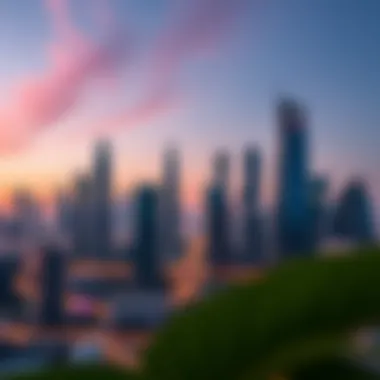

Some of the key elements shaping demand are:
- Economic Growth Rate: A rising GDP typically correlates with increased office space absorption as businesses expand their operations.
- Employment Trends: The creation of jobs prompts businesses to seek out more office space, directly affecting tower occupancy rates.
- Global Events: Events such as financial crises or pandemics can disrupt usual patterns of demand, compelling businesses to adapt swiftly.
Moreover, the governmental policies on trade, taxation, and business incentives can play a substantial role in shaping the demand landscape. Investors and companies need to keep a finger on the pulse of these policies to anticipate shifts in demand.
"Intelligent investment decisions are rooted not just in current market conditions but also in an understanding of broader economic imperatives."
Socio-Cultural Impact
The emergence of single business tower offices in Dubai is not just a technical advancement; it also carries substantial socio-cultural weight. These structures are catalysts for change in how businesses operate and how people interact within a workspace environment. Understanding this socio-cultural impact is vital for stakeholders ranging from homebuyers to investors, as they navigate the complex tapestry of Dubai's real estate market.
Changing Work Culture and Preferences
In today's environment, the work culture is shifting gears. The rise of individualism, coupled with the digital transformation, is redefining what employees expect from their workplaces. More than ever, professionals are seeking spaces that resonate with their lifestyle choices and personal values. The single business tower offices play a significant role in this transition, as they often incorporate communal areas, flexi-spaces, and tech-friendly environments.
There's a palpable shift from traditional, rigid office setups to more collaborative models. For instance, the open office layouts in these towers are designed to foster communication and creativity among employees. Companies that are ahead of the curve invest in these spaces, understanding that a conducive environment can lead to improved productivity.
Key Aspects of Changing Work Culture:
- Flexibility: Many firms are adopting flexible working hours and remote arrangements, pushing the need for office spaces that can easily adapt to varying needs.
- Well-being: The focus on mental health and well-being is becoming a non-negotiable aspect of work culture. Towers equipped with wellness amenities, such as fitness centers or green roofs, resonate well with modern employees.
- Technology Integration: A space that embraces smart technologies—like seamless Wi-Fi, video conferencing capabilities, and smart HVAC systems—often becomes a preferred choice.
These factors indicate how the preferences of employees and the broader work culture are steering the design and functionality of office spaces in Dubai.
Community and Networking Opportunities
Single business towers are not just places for work; they’re also fertile ground for networking and community building. The geographical and architectural design of these offices encourages social interactions among professionals from various sectors. Shared lounges, event spaces, and cafes within the buildings serve as hubs for spontaneous conversations and collaborations.
Dubai’s dynamic economy thrives on connections. The ability to easily network with startups, established firms, and service providers enhances the attractiveness of these towers. For instance, participating in events like ‘Tech Thursdays’ hosted in these towers allows businesses to showcase their offerings while also learning from others in their vicinity, creating a sense of shared purpose.
Benefits of Networking Opportunities:
- Collaboration: Opportunity to team up on projects or initiatives that can lead to innovative solutions.
- Support Systems: Building a network can provide firms and employees with resources and advice, positively influencing growth and development.
- Cultural Exchange: Professionals from different backgrounds contribute to a rich tapestry of ideas, processes, and perspectives.
In essence, these towers are shaping not just the skyline of Dubai, but also the socio-cultural landscape by fostering connections that can lead to individual and collective growth. They embody the essence of modern business practices, where community and collaboration hold equal importance to individual ambition and success.
"In a city like Dubai, where cultures intersect, single business tower offices represent a melting pot of ideas and opportunities."
Challenges of Occupying Business Towers
Navigating the bustling real estate landscape of Dubai, single business tower offices come with their fair share of challenges. While these structures often symbolize modernity and innovation, the act of occupying them involves several critical logistical, regulatory, and financial considerations that cannot be overlooked. Understanding these challenges is crucial for prospective tenants, investors, and key players in the market to ensure they make informed decisions.
Logistical Considerations
One of the primary challenges faced by businesses looking to occupy a single business tower office is the logistics involved in setting up and operating within such buildings. The high-rise nature of these structures lends itself to complexities that traditional office spaces might not encounter. Accessibility is a major factor; with multiple floors and a bustling population, ensuring smooth access for employees and clients alike is paramount.
Additionally, space optimization poses its difficulties. In a single business tower, space must be used efficiently to ensure comfort and functionality. From selecting the right office layout to accommodating necessary technology infrastructures, such as high-speed internet connections and telecom systems, these considerations can be daunting for businesses.
Furthermore, moving logistics cannot be overlooked. Transitioning into a high-rise environment often requires specialized moving equipment and techniques to safely transport office furniture and equipment. This raises planning complexities, particularly when it comes to coordinating moves with building management to minimize disruptions and adhere to scheduled elevator usage.
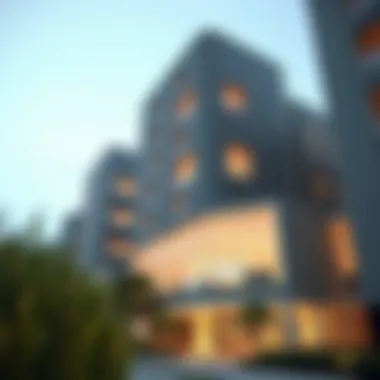
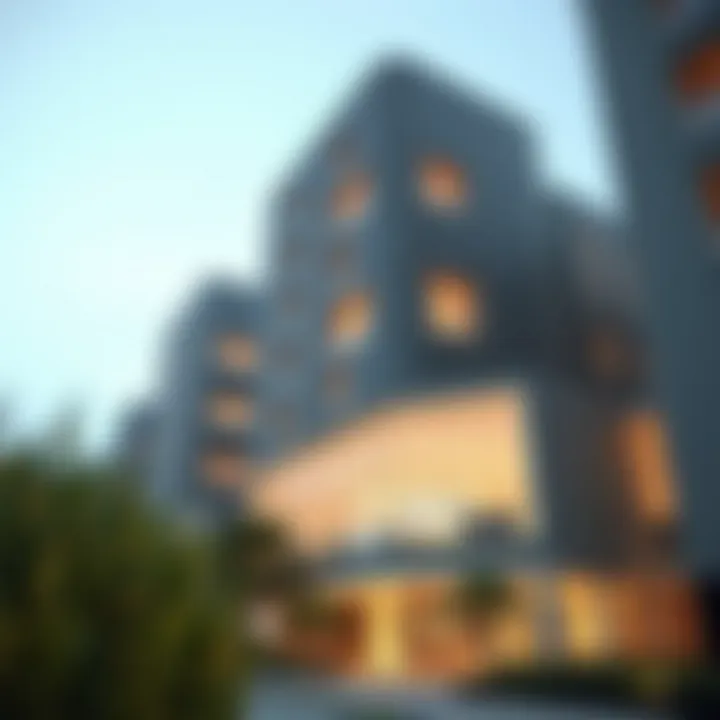
Regulatory and Compliance Issues
Navigating the myriad of regulatory and compliance issues associated with occupying a business tower is another hurdle. Each tower adheres to strict building codes and regulations laid out by local authorities in Dubai. Health and safety regulations are crucial; businesses must ensure that their workspace meets specified standards, including fire safety measures and emergency exits, particularly in high-occupancy buildings.
Moreover, there are environmental regulations to consider. Many modern business towers emphasize sustainability, and tenants may find themselves needing to align with such initiatives. Building management's compliance expectations may require tenants to engage in sustainability practices, affecting operational protocols and employee training.
Ultimately, ensuring all legal documents and tenant agreements are above board can prove to be a complicated task. Businesses must work closely with legal experts to navigate lease terms and building use policies, which may differ from one tower to another.
Cost of Leasing and Maintenance
The financial aspects of leasing a single business tower office can also be fraught with challenges. Generally, leasing costs in Dubai's competitive real estate market can be steep. This includes not just the base rental rate, but also associated costs that may arise.
Hidden costs such as service fees, maintenance charges, and utility expenses can quickly accumulate, leading to a financial burden on tenants. Additionally, many towers require businesses to contribute to a reserve fund for building maintenance, which can be an unexpected line item in the annual budget.
Occupants must also consider the maintenance of their own office spaces. Routine upkeep, repairs, and any enhancements necessary to satisfy evolving workspace needs can lead to ongoing costs, further straining budgets. It is prudent for businesses to comprehensively assess their financial capabilities before committing to leases in these illustrious towers.
In summary, while the allure of single business tower offices in Dubai offers numerous advantages, prospective tenants must remain acutely aware of the logistical, regulatory, and financial challenges that accompany these prime real estate options. Addressing these concerns head-on will pave the way for their successful integration into the dynamic business ecosystem of Dubai.
Future Outlook
The future of single business tower offices in Dubai is a subject of significant interest, especially as the city continues its rapid development. These towers are not just structures; they represent a unique facet of Dubai's growing business landscape, making it essential to explore their future outlook. The integration of innovative designs, economic fluctuations, and shifting work preferences will shape how these spaces evolve.
Predicted Trends in Tower Developments
In the coming years, the architectural approach towards business towers in Dubai is expected to shift noticeably. Developers are likely to embrace sustainable designs and smart technology integration. This transition responds to both environmental concerns and the demand for modern amenities that enhance productivity.
- Sustainability: The push for green buildings has never been so pressing. Future towers will likely incorporate renewable energy sources, energy-efficient systems, and materials that minimize ecological footprints. These features not only appeal to eco-conscious businesses but can also result in lower operational costs over time.
- Mixed-use Spaces: There’s a growing trend towards developing mixed-use spaces that combine offices with retail and recreational facilities. This integration can create vibrant ecosystems, allowing businesses to thrive while offering employees convenience.
- Flexibility in Design: As remote work becomes a fixture in many sectors, demand for adaptable office designs might rise. Future towers will likely feature modular layouts that can be adjusted based on changing occupancy needs. Companies will want spaces that can rapidly transform to suit their current workforce and style.
Emerging Technologies in Office Space Management
Beyond architecture, technology is set to play a pivotal role in the management and utilization of office spaces within single business towers. As companies face heightened competition, the implementation of advanced technologies will be crucial.
- Smart Building Systems: The integration of Internet of Things (IoT) devices in offices can vastly enhance the user experience. From smart lighting and temperature control to occupancy monitoring, these systems will optimize energy use and operational efficiency.
- Data Analytics: By employing big data to understand office usage patterns better, managers can fine-tune their services. This may involve analyzing traffic flows and personalizing workspaces based on real-time data.
- Virtual and Augmented Reality: These technologies offer new possibilities in workspace design and employee training. For instance, potential tenants could use VR to visualize office spaces before committing, which could potentially accelerate leasing processes.
In summary, the future of single business tower offices in Dubai looks promising and multifaceted. With sustainability, innovative architectural trends, and smart technologies on the horizon, these towers will not just house companies, but will be pivotal players in redefining how businesses operate in urban landscapes.
Finale
The conclusion of this article serves as a pivotal summation of the various dynamics surrounding single business tower offices in Dubai's ever-evolving real estate market. These towers, once considered mere symbols of modernity, have transformed into critical components shaping business landscapes and influencing investment strategies.
Summary of Key Insights
In examining the interplay of architectural innovation, economic factors, and socio-cultural impacts, we uncover several key insights:
- Architectural Innovation: Single business tower offices showcase cutting-edge design trends that merge form and function efficiently. Their height and presence bring a skyline dynamism to Dubai, while the interior spaces reflect contemporary work needs.
- Economic Impact: As business activity ramps up in Dubai, the demand for single tower offices is likely to grow. This demand indicates a robust investment potential, not just for businesses using these spaces but also for investors seeking stability in real estate.
- Socio-Cultural Factors: The emergence of flexible work cultures, promoting collaboration and networking opportunities, enhances the appeal of these business towers. They are not merely places of work; they foster connections among professionals in various industries.
These insights illustrate how single business tower offices are not just buildings but rather a reflection of changing work dynamics, economic resilience, and cultural values in Dubai.
Final Thoughts on Investment Opportunities
For investors, the single business tower office trend signals a robust opportunity worth considering.
- Stable Returns: Given the resilience of Dubai's economy and its position as a global hub, single business tower offices offer prospects for stable long-term returns on investment.
- Diversification Potential: Including these properties in an investment portfolio can diversify risk, particularly in turbulent economic times.
- Alignment with Modern Business Needs: Investing in these towers aligns with the evolving needs of modern businesses that prioritize sustainability, technology integration, and aesthetic appeal in their workspaces.
Overall, as the demand for such properties continues to rise, understanding the integral role they play in contributing to Dubai's economic and social fabric becomes essential for savvy investors and businesses alike. By staying attuned to these developments, stakeholders can navigate this dynamic landscape and seize opportunities as they arise.



